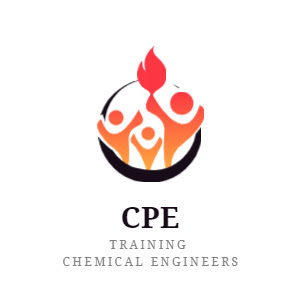Today i want to post something better for our chemical engineers / process engineers which is a consolidation of reaction engineering and design by grabbing the basics. I'll take a case study on implementing of mechanistic studies for a considered reaction mechanism and using the data to design a batch reactor. This post is applicable for even the chemists who work in chemical manufacturing industries except the oil men.
Before that, i want to give you guys a warm welcome at Pharmacalculations. We’ll exploring a powerful transformation used in the manufacture of pharmaceutical intermediates — the Ritter Reaction. This acid-catalyzed process enables the conversion of alcohols or alkenes with nitriles into tertiary amides, which are vital building blocks in API and agrochemical synthesis.
But we won’t stop at just the chemistry. This post will walk you through:
-
The reaction mechanism
-
How to identify the rate-determining step
-
How to derive the rate law
-
How to determine the reaction order
-
How to design a batch reactor using Levenspiel’s performance equations
Let’s base this on a real manufacturing case: the production of Tert-butylacetamide.
Before jumping into the post, i want to dedicate this to a section of Chemical Engineers who feel that chemistry is not our part to work on. Any Reaction that is going to be designed in a chemical manufacturing industry requires two hands for the upliftment i.e., a proper chemistry and also the engineering for its successful establishment. Its never bad to grab few Chemistry insights while working in Chemical manufacturing industry. I would like to thank Mr. P Jagadish Kumar for motivating me to understand chemistry before taking up the process detailing part.
Anyhow, lets jump into our show.
Today, i've planned to take a complex Ritter reaction.
Industrial Case: Ritter Reaction for tert-Butylacetamide Synthesis
Reaction:
-
Alcohol: tert-Butyl alcohol (TBA)
-
Nitrile: Acetonitrile
-
Catalyst: Sulfuric acid
-
Product: tert-Butylacetamide
-
Reactor: Glass-lined batch reactor
-
Temperature: 60–70°C
-
Target Conversion: ≥90% in ≤1 hour
Before getting into the main case, lets check few basic question & answers to understand case better.
What is the Ritter reaction used for?
For making amides from carbocations and nitriles — widely used in pharma.
Why is tert-butyl alcohol selected?
It forms a stable tertiary carbocation, ensuring fast and selective reaction.
Why sulfuric acid?
It acts both as a catalyst and proton source to initiate carbocation formation.
Why excess acetonitrile?
To drive the reaction forward and simplify the rate law (pseudo-first-order in CH₃CN).
What are typical side reactions?
Nitrile hydrolysis and unconverted alcohol due to incomplete conversion.
What kind of reactor is preferred?
A glass-lined batch reactor to handle the acidic conditions and control the exotherm.
Is the reaction exothermic?
Yes — particularly during carbocation formation. Controlled dosing and external cooling are recommended.
What is the rate-determining step?
The attack of nitrile on the carbocation intermediate.
What is the reaction order?
Typically 2nd order (1st in TBA, 1st in H⁺) when CH₃CN is in excess.
How do we derive the rate law?
Using the reaction mechanism and applying the steady-state approximation to the carbocation.
Reaction Mechanism of the Ritter Reaction
Let:
Stepwise Mechanism:
Step 1: Protonation of Alcohol (Fast, Reversible)
Step 2: Attack of Nitrile (Slow, Rate-Determining)
Step 3: Hydrolysis of Iminium (Fast)
How to Identify the Rate-Determining Step (RDS)
Knowing the RDS is critical to deriving the right rate expression.
1. Look for the slow step
Mechanisms often label the slow step — here, Step 2 (nitrile attacking carbocation) is the slowest.
2. Analyze intermediate buildup
The carbocation forms quickly (Step 1), but reacts slowly with CH₃CN. This indicates [C⁺] accumulates, confirming Step 2 is RDS.
3. Validate with experimental kinetics
Derived rate law:
If [B] is in large excess, this simplifies to:
r=k1[A][H+]r = k_1 [A][H^+]This matches observed 2nd order kinetics, further confirming Step 2 is the RDS.
Rate Law Derivation Using Steady-State Approximation
From the mechanism:
Step 1
Step 2 (RDS)
Assume steady state on [C⁺]:
Solving:
Rate of product formation (RDS):
Reaction Order Identification
Case 1: [B] is limited
Case 2: [B] in large excess
In industry, CH₃CN is used in excess — so the working rate law becomes:
Batch Reactor Design Using Performance Equation
From Levenspiel (Ch. 1 & 3) — for 2nd order in A and H⁺:
Assumed Lab Data:
Estimate k from lab trial:
Batch Time at Different Conversions (using
Higher conversions = exponentially more time due to second-order kinetics.
Thats it....!!
Hope you understood everything clearly.
Any queries, feel free to reach us at pharmacalc823@gmail.com
Comments are most appreciated ....!!
Poll Maker
About The Author
Hi! I am Ajay Kumar Kalva, Currently serving as the CEO of this site, a tech geek by passion, and a chemical process engineer by profession, i'm interested in writing articles regarding technology, hacking and pharma technology.
Follow Me on Twitter AjaySpectator & Computer Innovations







 Hi! I am Ajay Kumar Kalva, owner of this site, a tech geek by passion, and a chemical process engineer by profession, i'm interested in writing articles regarding technology, hacking and pharma technology.
Hi! I am Ajay Kumar Kalva, owner of this site, a tech geek by passion, and a chemical process engineer by profession, i'm interested in writing articles regarding technology, hacking and pharma technology. 
No comments:
Post a Comment